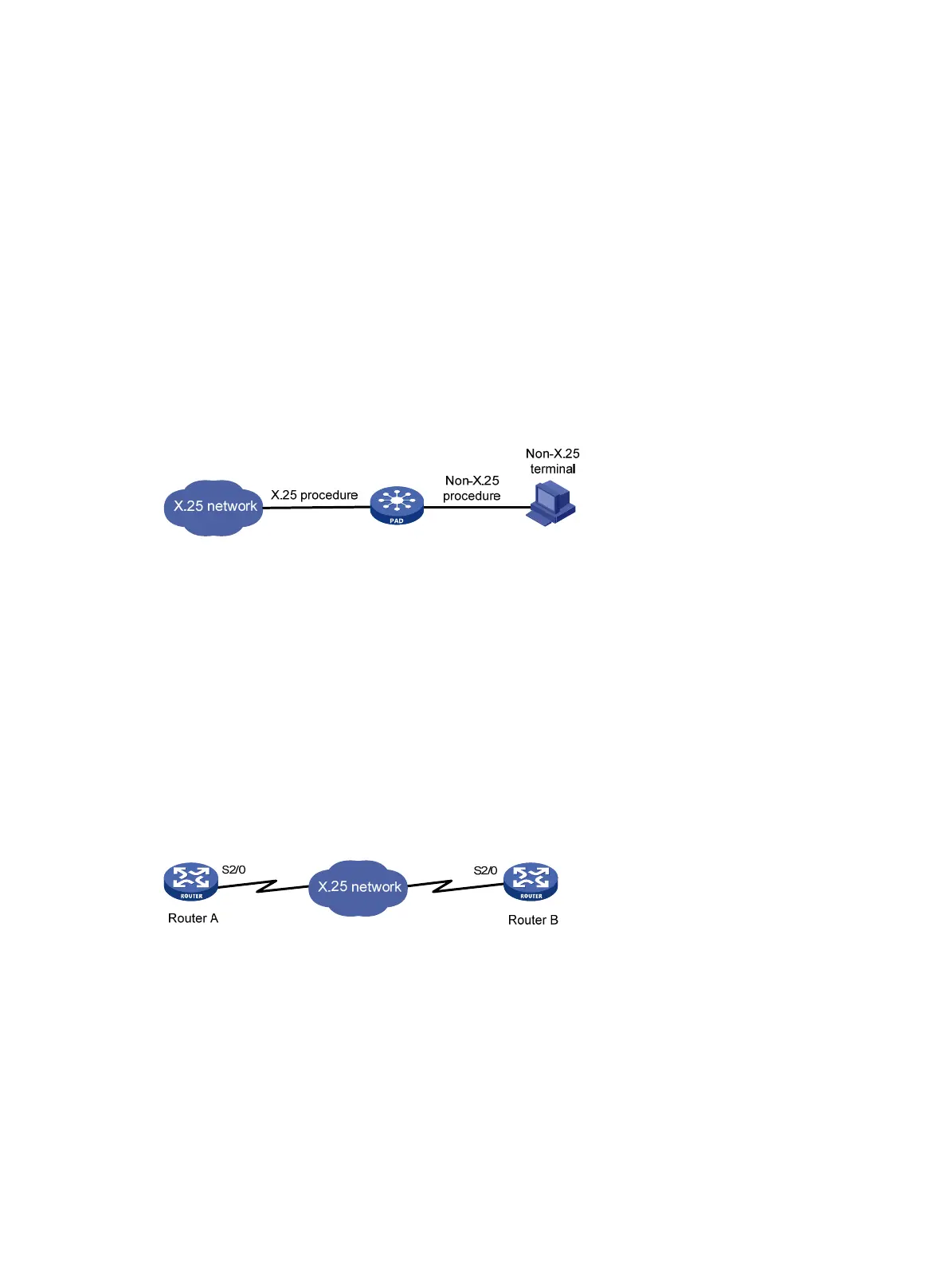333
Configuring X.25 PAD remote access service
PAD
Packet Assembly/Disassembly (PAD) is an X.25-specific concept. Traditionally, only X.25 terminals
could connect to an X.25 network. These terminals must be packet terminals that support X.25
procedures in terms of hardware and software. However, many terminals in common use are
non-X.25 terminals. They either have no intelligence available with packet terminals or have
intelligence but do not support X.25 procedures. Examples of such terminals are keyboards,
monitors, and printers. To allow these devices to communicate on X.25 networks, X.25 PAD was
developed.
X.25 PAD provides a mechanism to connect non-X.25 terminals to an X.25 network. As shown
in Figure 130,
a PAD facility is placed between non-X.25 terminals and an X.25 network, allowing
them to communicate with other terminals across the X.25 network.
Figure 130 PAD interfacing functions
X.25 PAD provides the following functions:
• X.25 procedures support for connectivity and communication with X.25 networks.
• Non-X.25 procedures support for connectivity with non-X.25 terminals.
• Capabilities allowing non-X.25 terminals to set up calls, transmit data, and clear calls.
• Capabilities allowing non-X.25 terminals to observe and modify interface parameters to
accommodate to different terminals.
X.25 PAD facilities are regarded as procedure translators or network servers, helping different
terminals access X.25 networks.
The system implements X.29 and X.3 protocols in the X.25 PAD protocol suite. In addition, it
implements X.29-based Telnet. This allows you to Telnet to a remote router through X.25 PAD when
IP-based Telnet is not preferred for security sake, as shown in Figure 131.
Figure 131
Log in to a remote router through X.25 PAD
Configuring X.25 PAD
Placing an X.25 PAD call to log in to a remote device
If two routers on an X.25 network support X.25 PAD, use the pad command to place an X.25 PAD
call on one router (the client) to log in to the other router (the server). If authentication is configured,
the server will authenticate the client before allowing it to log in.
After logging onto the server, you can access the configuration interface of the server and then
configure the server.

